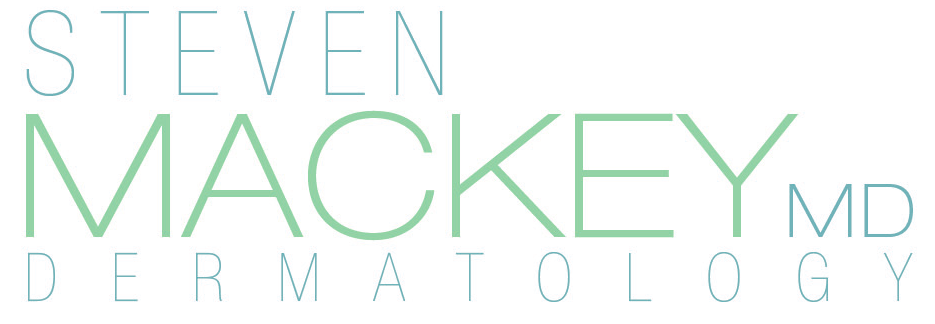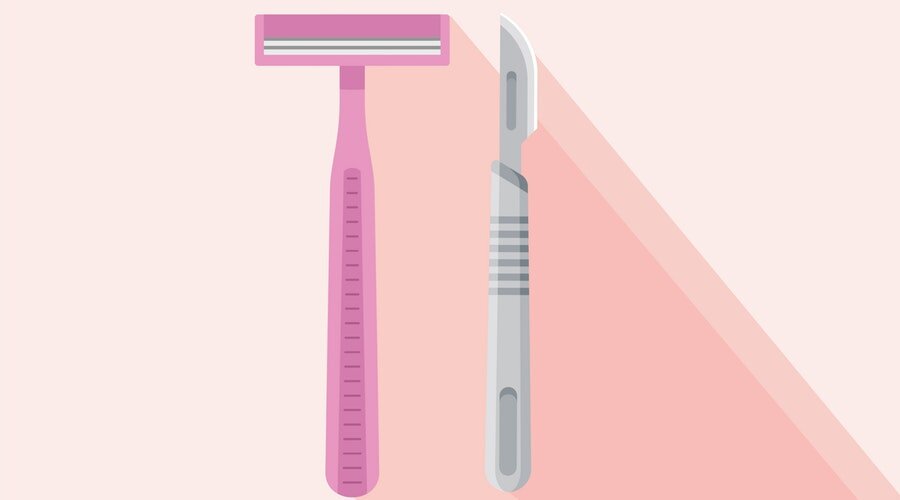Dermaplaning vs Shaving
Illustrations by Lauren Johnstone / The Covet Co.
This is an exerpt from SPOTLYTE by Allergan. We love this site and recommend you visit this story and see lots more.
No, Dermaplaning Isn’t the Same as Shaving! This Is What You Need to Know
By now, you are likely well acquainted with all of the glorious benefits of exfoliation: it leaves your complexion brighter, smoother, and even looking a little younger, all thanks to removing that dead, dull layer on the skin’s surface. Chemical peels and scrubs are the most popular methods, but one technique in particular — dermaplaning — goes one step further, and removes that fine, wispy hair on your face, too.
For those of us who battle dark facial hair, this characteristic of dermaplaning makes us nervous enough to avoid it entirely — what if it causes our mustache or chin hairs to grow back darker? Afterall, there’s a reason we wax, laser, thread, and tweeze instead of shaving our frustrating facial hairs. We consulted with a dermatologist and a master esthetician to help clear up exactly how dermaplaning works, who benefits from it (and who should steer clear), and explain how it’s different from straight up shaving your face.
What is dermaplaning?
Think of dermaplaning as the intersection between standard shaving and exfoliation. In addition to removing the vellus hair — a.k.a. soft peach fuzz — the treatment also removes the very top layers of dead skin cells via a carefully angled surgical blade.
“Estheticians started incorporating dermaplaning as an add-on to their treatments in the past few years as a way to professionally remove hair from your face without lasers, tweezers, wax, or other painful alternatives,” explains Gretchen Frieling, MD, a double board-certified dermatopathologist based in Wellesley, Massachusetts. “Additionally, the procedure generally will remove between two to three weeks of dead skin from the facial area.”
What are the benefits of dermaplaning? Should I try it?
In addition to creating a smoother and more radiant complexion, Dr. Frieling adds that dermaplaning allows your products to penetrate more easily and your makeup to glide on more seamlessly. Consistent dermaplaning can even help reduce the appearance of acne scars and fine lines in the same way regular chemical and physical exfoliation can.
Many skin types benefit from dermaplaning, including those who simply want to relish in the benefits of consistent exfoliation and a smoother face. It’s especially ideal for pregnant and breastfeeding women since they can’t indulge in certain exfoliating treatments and products during this time, notes Dr. Frieling.
That said, those dealing with acne or excess sebum production ought to avoid the treatment. Skin with active acne will of course be irritated by dermaplaning, while an overload of oil could cause the blade to snag on skin (yikes!). Dr. Frieling adds, “[Those] oils may cause bacteria growth, which could lead to acne breakouts.”
Does dermaplaning cause breakouts?
As we mentioned above, dermaplaning should not be performed on those dealing with ongoing, mild to severe active acne. However, it can actually help prevent clogged pores and pimples on others who get the procedure done.
“By removing the top layer of dead skin cells, dermaplaning prevents these cells from getting trapped inside your pores. Less dead skin means fewer breakouts,” points out Dr. Frieling. “It also can make it easier for acne treatments and serums to penetrate into the pores to prevent future breakouts.” Sounds good to us!
Can dermaplaning cause my facial hair to grow back darker?
The short answer to this question is no.
“This myth comes in many forms, with many claims; it’s totally untrue that shaving hair in any way will make it darker, thicker, or more prevalent,” says Sarah Akram, a board-licensed master esthetician based in Alexandria, Virginia. “Scientifically, it really doesn’t even make sense. All you’re doing is cutting the hair shaft, not causing any damage between the hair root and its connection to our skin. Dermaplaning and shaving will both have zero effect on hair color, thickness, or the amount of hair you grow.”
It will take about one week for your hair to begin growing back after dermaplaning, at which point you can schedule your next appointment. From our first-hand experience with the treatment, your face might feel the tiniest bit (and, really, practically imperceptibly) prickly as the vellus hairs grow back, but once they’re back to their original state, your face will feel no different than it did before the treatment.
OK, but what’s the real difference between dermaplaning and shaving?
The biggest difference between dermaplaning and regular shaving boils down to the types of tools used and who is wielding said tools.
“Dermaplaning generally requires a surgical scalpel to cut close enough to the skin and also be sensitive enough to capture those small hairs and top layer of dead skin cells,” explains Akram. “It is much more meticulous and up-close than shaving.”
Dr. Frieling adds, “Professional dermaplaning also removes dirt and oil buildup in your hair follicles, which often occurs if you have excess hair on your face. In short, dermaplaning provides much better exfoliation than shaving does.”
How do I get a dermaplaning treatment?
The fact that dermaplaning requires using a very sharp surgical blade ought to serve as an indicator that this treatment is best performed in-office by an experienced and licensed practitioner.
Though there are at-home devices available over-the-counter, both Akram and Dr. Frieling strongly advise against using them. In addition to having to manipulate the device in a certain way to prevent nicks, ingrown hairs, and stubble, they require strict sterilization, and blades should never be used more than once. This sort of protocol becomes more lax in an at-home setting (be honest with yourself!), leaving you at risk for infection and breakouts.
Call us today to schedule your very own Dermaplaning! You will love it. Cost = $50/$55

